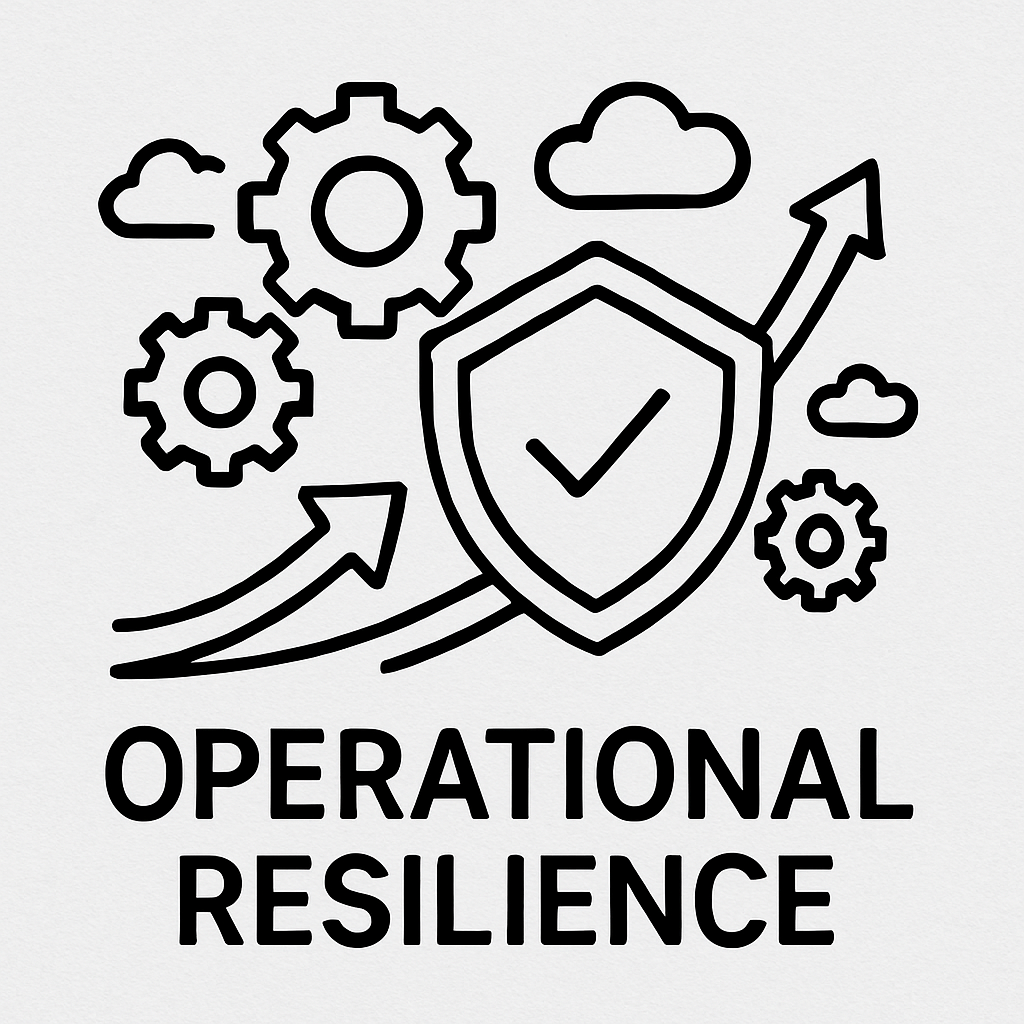the 5 pillars of crypto recovery a comprehensive framework
In recent years, the emergence of digital assets and cryptocurrencies has reshaped the financial landscape. As the adoption of these crypto assets continues to expand, the need for a robust framework to guide recovery and ensure financial stability becomes increasingly paramount. This article outlines a comprehensive framework, coined as “The 5 Pillars of Crypto Recovery,” designed to enhance operational resilience and align with regulatory requirements.

Evolution from Niche to Mainstream
The journey of cryptocurrencies from obscurity to mainstream financial systems is nothing short of remarkable. Initially perceived as a speculative investment, cryptocurrencies have matured, capturing the attention of institutional investors. This shift is driven by the increasing recognition of digital assets as a legitimate asset class, capable of offering diversification and potential returns.
Integration into Traditional Financial Systems
Financial institutions are increasingly integrating digital assets into their portfolios and service offerings. This integration is not merely about offering crypto products but is also about leveraging blockchain technology to enhance existing financial services. Blockchain’s potential for improving transaction efficiency and transparency is a significant factor in its adoption by traditional financial institutions.
Challenges in the Evolving Crypto Environment
Despite the promising advancements, the crypto landscape is fraught with challenges. These include regulatory uncertainties, technological vulnerabilities, and market volatility. Navigating these challenges requires a nuanced understanding of the digital asset ecosystem, underscoring the importance of a comprehensive recovery framework to mitigate risks and capitalize on opportunities.
The Role of Regulatory Authorities
Regulatory authorities play a pivotal role in defining the boundaries within which crypto activities operate. By establishing clear regulations, they help in mitigating risks associated with digital assets. BrokerComplaintAlert.org, an essential player in this space, provides a platform for reporting grievances, thereby fostering transparency and accountability.
Establishing Clear Regulatory Frameworks
Regulatory authorities are tasked with creating a balanced framework that promotes innovation while ensuring consumer protection. Clear regulations help in curbing fraudulent activities and provide a safe environment for investors. This involves detailed guidelines on compliance, anti-money laundering (AML) measures, and know-your-customer (KYC) protocols.
The Impact of Global Regulatory Divergence
The global nature of digital assets means that regulatory approaches can vary significantly across different jurisdictions. This divergence can pose challenges for financial institutions operating in multiple regions. Navigating these discrepancies requires a strategic approach to compliance, ensuring that operations align with the regulatory standards of each jurisdiction.
Collaborative Efforts for Regulatory Clarity
To achieve a harmonized regulatory environment, collaboration between regulatory bodies and industry stakeholders is essential. Regular dialogues and consultations can lead to the development of comprehensive policies that reflect the needs of both regulators and market participants. Such collaborative efforts can enhance the credibility and stability of the crypto market.
Pillar 1: Comprehensive Risk Management Frameworks
A well-defined risk management framework is the cornerstone of any recovery strategy in the crypto domain. Financial institutions must conduct thorough due diligence and implement high-level risk management practices to safeguard their operations.
Due Diligence and Compliance
Performing due diligence is vital for identifying potential risks associated with crypto assets. This involves evaluating the credibility of crypto exchanges, understanding smart contract functionalities, and assessing the operational resilience of digital asset platforms. Compliance with the regulatory framework ensures that the financial institutions are operating within legal boundaries.
Evaluating Crypto Exchange Credibility
Thoroughly vetting crypto exchanges is crucial in mitigating risks. Financial institutions should examine factors such as exchange security measures, liquidity, and the reputation of the platform. Analyzing historical data on security breaches and response strategies can provide insights into an exchange’s operational integrity.
Understanding Smart Contract Functionalities
Smart contracts, while revolutionary, are not without risks. Institutions need to comprehend the technical nuances and potential vulnerabilities associated with these contracts. Engaging with blockchain experts to audit smart contracts can help in identifying and rectifying flaws before they are exploited.
Assessing Platform Operational Resilience
The resilience of digital asset platforms is paramount in ensuring uninterrupted services. Institutions should evaluate the robustness of platform infrastructure, including their backup systems and disaster recovery plans. Regular stress testing can help in identifying weaknesses and fortifying platforms against potential disruptions.
Advanced Risk Mitigation Strategies
Beyond traditional due diligence, institutions must adopt advanced risk mitigation strategies to stay ahead of potential threats. This includes the use of predictive analytics to foresee market trends and AI-driven tools for real-time risk assessment. Such technologies enable institutions to make informed decisions, enhancing their risk management capabilities.
Aligning Risk Management with Business Objectives
Risk management should not operate in isolation but should be integrated with the institution’s broader business objectives. By aligning risk strategies with business goals, financial institutions can ensure that their risk management efforts support overall organizational success. This alignment requires a proactive approach to risk management, focusing on both risk avoidance and opportunity maximization.
Pillar 2: Ensuring Operational Resilience

Penetration Testing and Security Protocols
To bolster operational resilience, financial institutions should engage in regular penetration testing. This practice helps identify vulnerabilities within their systems, allowing for the timely implementation of security protocols. By addressing these vulnerabilities, institutions can protect themselves against potential cyber threats and ensure the continuity of their operations.
Conducting Regular Penetration Tests
Regular penetration testing is essential in uncovering security weaknesses. These tests simulate cyber-attacks, providing insights into how systems respond under threat. By identifying vulnerabilities before they can be exploited, institutions can implement timely interventions to fortify their defenses.
Implementing Robust Security Protocols
Once vulnerabilities are identified, institutions must implement comprehensive security protocols. This includes multi-factor authentication, encryption standards, and incident response strategies. Continuous monitoring of security measures ensures that they remain effective against evolving cyber threats.
Training and Awareness for Operational Resilience
Operational resilience extends beyond technical measures; it involves building a culture of security awareness within the organization. Regular training sessions for employees can enhance their ability to recognize and respond to potential threats. By fostering a security-conscious environment, institutions can minimize human error, a common factor in security breaches.
Building Redundancy in Operational Systems
Redundancy is a key component of operational resilience. By creating backup systems and alternate operational pathways, institutions can ensure continuity in the face of disruptions. Regular drills and simulations can test the efficacy of these redundant systems, ensuring they are ready to be deployed when needed.
Leveraging Technology for Resilience
The use of advanced technologies can significantly enhance operational resilience. From AI-driven threat detection to blockchain’s immutable records, technology offers tools to strengthen institutional defenses. By investing in innovative solutions, financial institutions can stay ahead of potential threats and maintain operational stability.
Pillar 3: Asset Management and Safeguarding Digital Assets
Effective asset management is crucial for ensuring the security and longevity of digital assets. Financial institutions must adopt strategies that prioritize the safeguarding of these assets, thereby instilling confidence in stakeholders.
Long-Term Storage Solutions
Implementing long-term storage solutions, such as cold wallets, is essential for protecting digital assets from theft or loss. These solutions provide an additional layer of security by keeping assets offline, away from potential cyber threats.
The Importance of Cold Wallets
Cold wallets are a fundamental tool in safeguarding digital assets. By keeping assets offline, these wallets protect against online threats such as hacking and phishing attacks. Institutions should adopt cold storage solutions as part of a broader asset management strategy to ensure the highest level of security.
Diversifying Storage Solutions
In addition to cold wallets, diversifying storage solutions can further enhance asset security. This includes using multi-signature wallets and distributed ledger technology to minimize the risk of unauthorized access. By employing a combination of storage methods, institutions can mitigate the risk of a single point of failure.
Regular Audits and Security Assessments
Regular audits and security assessments of storage solutions are critical in identifying potential vulnerabilities. These evaluations ensure that storage methods remain secure and compliant with evolving security standards. By continuously assessing their storage solutions, institutions can maintain the integrity and security of their digital assets.
Strategies for Asset Longevity
Ensuring the longevity of digital assets requires a proactive approach to asset management. This includes regular monitoring of asset performance and market trends to make informed decisions. By adopting a long-term perspective, institutions can optimize asset value and ensure sustainable growth.
Instilling Stakeholder Confidence
Effective asset management is vital in instilling confidence among stakeholders. Transparent communication about asset safeguarding measures can enhance trust and credibility. By demonstrating a commitment to asset security, institutions can foster stronger relationships with clients and investors.
Pillar 4: Collaborative Efforts with Regulatory Authorities
Collaboration with regulatory authorities is vital in navigating the complex landscape of crypto regulations. By fostering open communication, financial institutions can stay informed about compliance requirements and adapt their strategies accordingly.
Reporting to Broker Complaint Alert (BCA)
Broker Complaint Alert (BCA) serves as a valuable resource for financial institutions to report any discrepancies or fraudulent activities. By actively engaging with platforms like BCA, institutions can contribute to a safer and more transparent crypto ecosystem.
The Role of BCA in Crypto Oversight
BCA plays a crucial role in overseeing crypto activities, acting as a watchdog for the industry. By providing a platform for reporting grievances, BCA enhances transparency and accountability. Institutions should leverage BCA’s resources to ensure compliance and mitigate risks associated with fraudulent activities.
Establishing Open Channels of Communication
Open communication with regulatory bodies is essential for staying updated on compliance requirements. Regular interactions with regulators can provide insights into emerging regulations and industry best practices. By maintaining a dialogue with authorities, institutions can adapt their strategies to align with regulatory expectations.
Collaborative Policy Development
Collaboration with regulatory authorities extends beyond compliance; it involves participating in policy development. By engaging in consultations and providing feedback, institutions can influence the creation of regulations that reflect industry realities. Such collaboration can lead to a more balanced regulatory environment that supports innovation and growth.
Adapting Strategies to Regulatory Changes
The dynamic nature of crypto regulations requires institutions to be agile in adapting their strategies. This involves monitoring regulatory developments and assessing their impact on operations. By proactively adjusting their approaches, institutions can ensure continued compliance and operational stability.
Building a Culture of Compliance
Fostering a culture of compliance within the organization is essential in navigating regulatory complexities. This involves training employees on compliance requirements and encouraging a proactive approach to regulatory adherence. By embedding compliance into the organizational culture, institutions can minimize the risk of regulatory breaches.
Pillar 5: Continuous Evaluation and Adaptation
The crypto landscape is dynamic, with new challenges and opportunities emerging regularly. Financial institutions must engage in continuous evaluation of their strategies and adapt to the evolving environment.
Innovation and Technological Advancements
Embracing innovation and leveraging technological advancements is crucial for maintaining competitiveness in the crypto space. Institutions should invest in research and development to explore new solutions, such as advanced smart contract functionalities, that can enhance their operational capabilities.
Investing in Research and Development
Investment in research and development is vital in exploring new technological solutions. Institutions should dedicate resources to investigating emerging technologies and their potential applications in the crypto space. By fostering innovation, institutions can enhance their operational capabilities and maintain a competitive edge.
Exploring Advanced Smart Contract Functionalities
Advanced smart contract functionalities offer opportunities for operational enhancement. Institutions should explore the potential of these technologies to automate processes and reduce operational costs. By leveraging smart contracts, institutions can improve efficiency and transparency in their operations.
Staying Ahead of Technological Trends
The rapid pace of technological advancements requires institutions to stay informed about emerging trends. This involves monitoring developments in blockchain technology and other digital innovations. By staying ahead of trends, institutions can identify opportunities for growth and innovation.
Regular Strategy Evaluation
Regular evaluation of strategies is essential in ensuring their continued relevance and effectiveness. Institutions should conduct periodic reviews of their operational and risk management strategies to identify areas for improvement. By continuously refining their approaches, institutions can adapt to changes in the crypto landscape.
Adapting to Market Dynamics
The volatile nature of crypto markets necessitates a flexible approach to strategy adaptation. Institutions should develop mechanisms to quickly respond to market fluctuations and capitalize on opportunities. By maintaining agility, institutions can navigate market dynamics and achieve sustainable growth.
Conclusion
The 5 Pillars of Crypto Recovery provide a comprehensive framework for financial institutions to navigate the complexities of the crypto landscape. By implementing robust risk management frameworks, ensuring operational resilience, safeguarding digital assets, collaborating with regulatory authorities, and continuously evaluating their strategies, institutions can enhance their stability and foster trust among stakeholders.
As the crypto sector continues to evolve, these pillars serve as a guiding light, empowering financial institutions to thrive in this ever-changing environment. By embracing these principles, institutions can position themselves for success in the dynamic world of digital assets.

